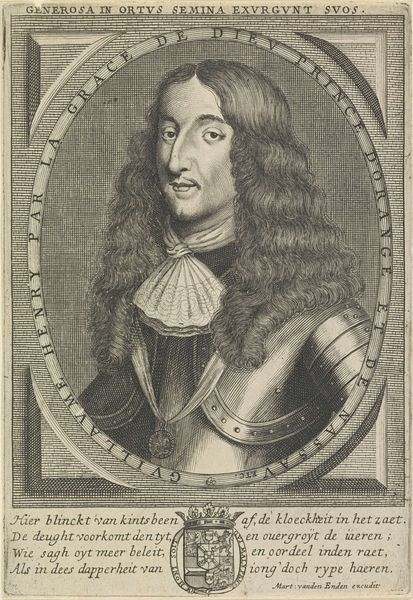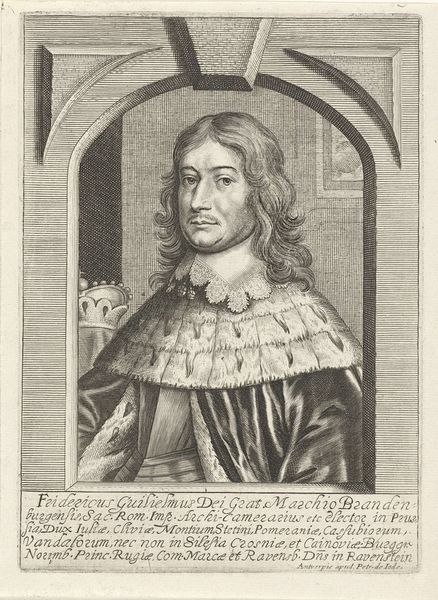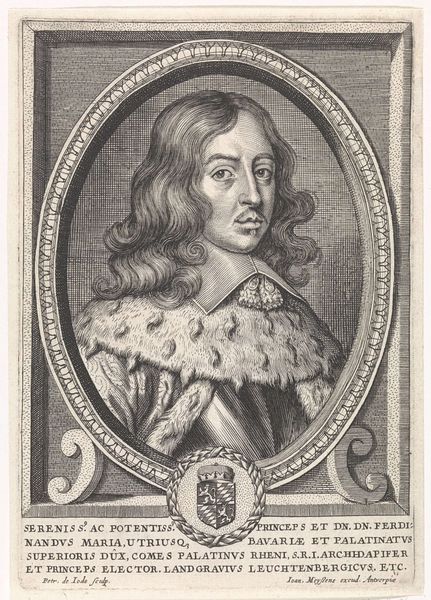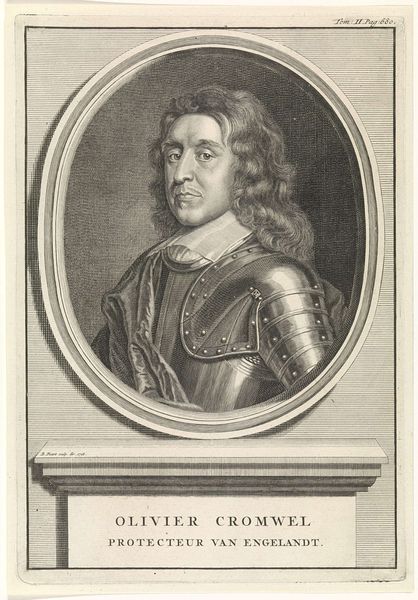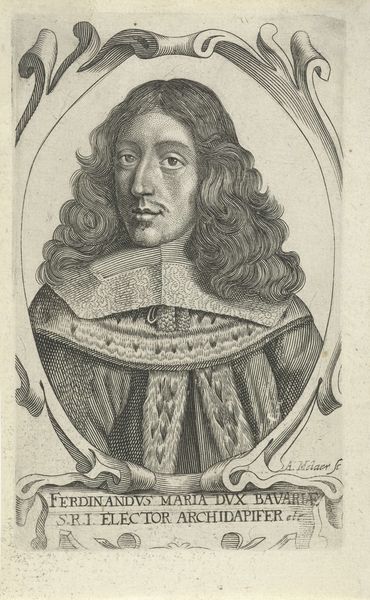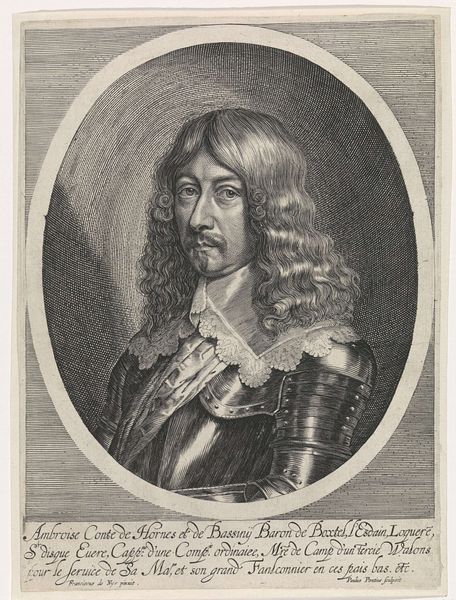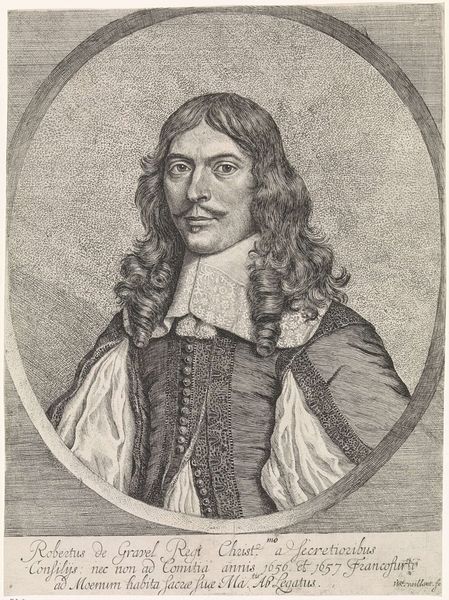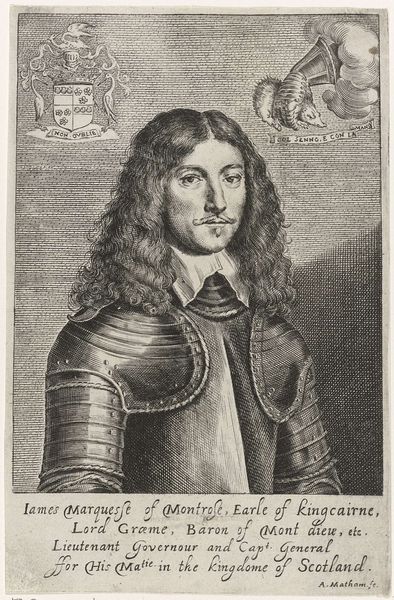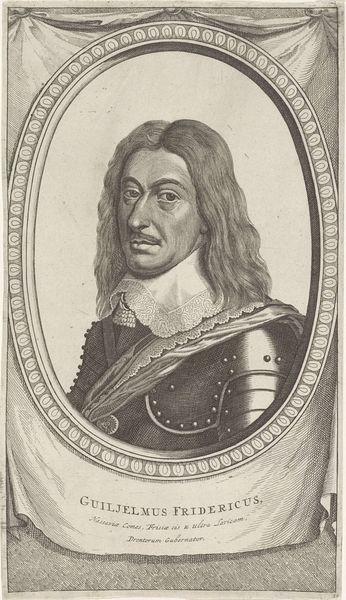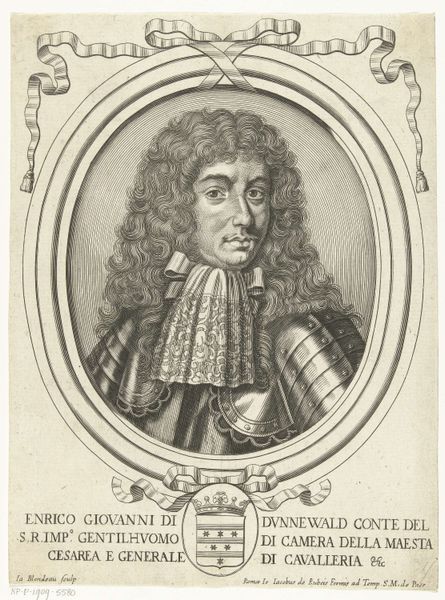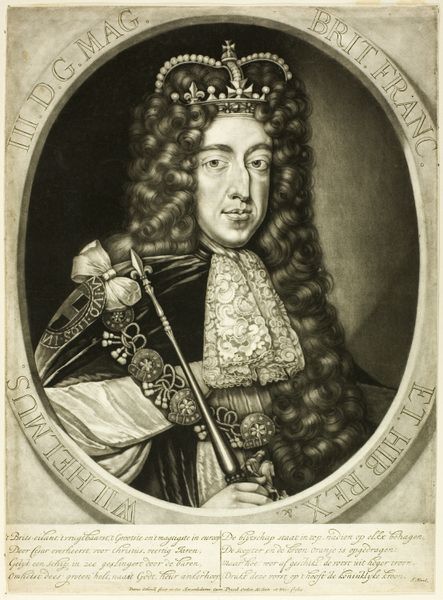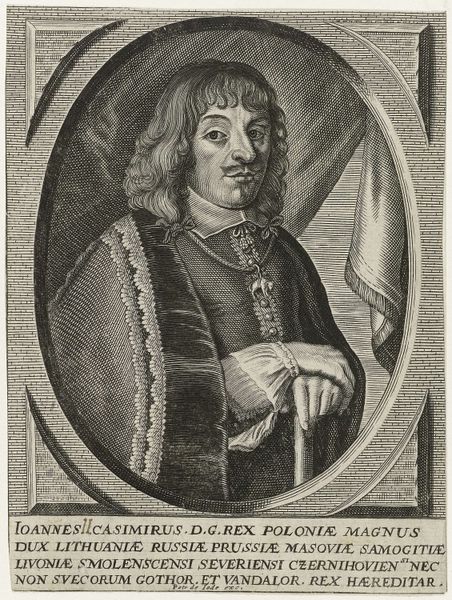
engraving
#
portrait
#
baroque
#
old engraving style
#
portrait reference
#
pencil drawing
#
engraving
Dimensions: height 418 mm, width 294 mm
Copyright: Rijks Museum: Open Domain
Curator: This engraving from 1647 by Crispijn van den Queborn depicts Frederik Willem, the Elector of Brandenburg. I find it quite detailed, especially considering it's just an engraving, which always strikes me as somewhat laborious. How do you interpret it? Editor: I notice how meticulously the engraver captured the textures, from the soft fur collar to the delicate lace. What can we learn from this intense focus on the physical rendering of the sitter and their garments? Curator: Precisely! Consider the *means* of production. Engraving, a process involving laborious carving into a metal plate, was how images were mechanically reproduced at the time. Its accessibility extended visual representations far beyond the wealthy elite. It democratizes portraiture to an extent, enabling wider distribution. The textures and garments, far from mere aesthetics, become crucial signifiers of wealth, power and social standing. Editor: So, it's less about simply depicting a likeness and more about broadcasting status through the sheer materiality and labor invested in its creation? Curator: Exactly. This engraving is as much about the *act* of creating an image, and the associated labor, as it is about representing the Elector. Think about who was commissioning such work, who had the means to produce these items, who could access them. Editor: That's interesting, viewing it through the lens of production and accessibility reveals another layer of meaning entirely. It encourages you to consider who had the agency here. Curator: Yes, and how this image functioned within the broader social fabric of the 17th century. I mean, it’s an economic document as much as it’s an artistic one. The choice of materials—the plate, the ink, the paper—they all contribute to a story about power and patronage. Editor: It shifts the focus away from just the ‘who’ and to the ‘how’ and ‘why.’ I'll definitely look at portraiture differently now. Curator: Precisely, remembering the conditions of art's creation offers a much wider understanding.
Comments
No comments
Be the first to comment and join the conversation on the ultimate creative platform.
